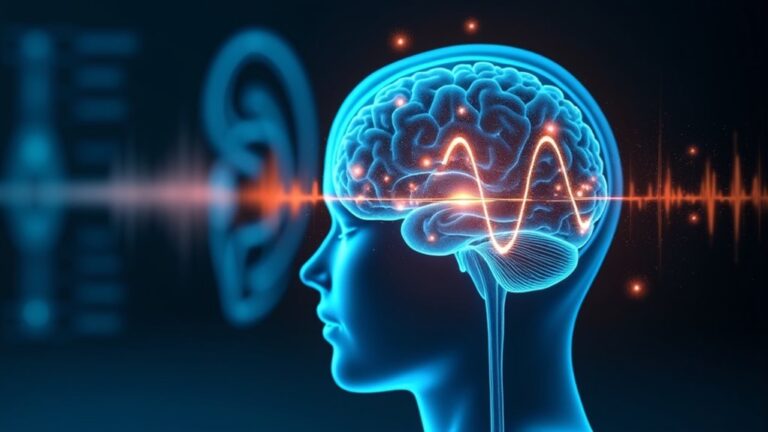Addiction isn’t just bad habits or weak willpower it’s a brain disease that rewires how a person ponders, reflects, and behaves. The brain’s reward system gets hijacked, making substances feel necessary for survival. Recovery isn’t about willpower alone; it demands science-backed strategies to heal the damage.
Medications can balance brain chemistry, therapy rewires harmful thought patterns, and lifestyle changes rebuild physical health. But why do some treatments work better than others, and how can someone construct a life beyond cravings?
Addiction as a Brain Disease
Identifying addiction as a chronic brain disease helps explicate why willpower alone rarely succeeds. Prolonged substance abuse damages the brain’s decision-making and reward systems, trapping people in a cycle of cravings and relapse.
Treating addiction necessitates more than discipline; it demands medical and psychological support. New medications like Vivitrol and Campral can stabilize brain chemistry, diminishing cravings so therapy works better. A comprehensive treatment plan combines these medications with cognitive behavioral therapy, which rewires harmful thought patterns. This approach addresses the root causes, not just symptoms, offering real hope for recovery.
Acknowledging addiction as a medical condition, not a moral shortcoming, is the vital first step toward effective, lasting healing.
The Science Behind Addiction and Brain Chemistry
The brain’s delicate balance of chemicals and pathways can be thrown off through repeated drug or alcohol use, reshaping how it functions. Addiction alters key areas like the cerebral cortex and limbic system, disrupting thought patterns and decision-making.
Chronic substance use rewires the brain’s reward system, making cravings overpower rational contemplation. Neuroscience reveals how this damage creates an internal struggle—like a “demon on one shoulder, angel on the other”—as the brain fights to regain control.
Treatment options, such as medications like Vivitrol or Campral, help restore neurotransmitter equilibrium, easing cravings. Cognitive behavioral therapy also plays a crucial role by tackling distorted thinking caused by addiction. Comprehending these changes highlights why recovery requires more than willpower—it demands science-backed strategies to heal the brain.
Comprehensive Treatment Approaches for Recovery
Integrated treatment approaches for recovery often combine medication-assisted treatment, cognitive behavioral therapy, and holistic strategies to address addiction from multiple viewpoints.
These methods work together to reduce cravings, reshape harmful thought patterns, and support physical and emotional healing. Through integrating these evidence-based tools, individuals gain a stronger foundation for long-term sobriety.
Medication-Assisted Treatment
How can someone rebuild their life as soon as addiction has taken control? Medication-assisted treatment (MAT) offers a science-backed approach to recovery by combining FDA-approved medications with therapy.
Cognitive Behavioral Therapy
Many people struggling with addiction find themselves trapped in a cycle of harmful thoughts that fuel cravings and relapse. Cognitive behavioral therapy (CBT) helps rewire the brain by identifying and replacing these destructive thought patterns with healthier ones. Confronting pro-addiction beliefs, individuals learn to resist urges and build lasting recovery. CBT works alongside medications and support systems, targeting the brain’s role in addiction while fostering mental resilience.
| Common Addictive Thought Patterns | CBT Replacement Strategies |
|---|---|
| “I need this to cope.” | “I can handle stress without substances.” |
| “One drink won’t hurt.” | “One drink leads to relapse.” |
| “I’ll never recover.” | “Recovery is possible with effort.” |
| “I’m powerless.” | “I can take control step by step.” |
This structured approach strengthens recovery by reshaping how the brain processes triggers and cravings.
Holistic Recovery Strategies
Long-term recovery from addiction isn’t just about stopping substance use—it’s about rebuilding a healthier life from the ground up.
A holistic approach considers the whole person, combining treatment for the brain, body, and mind. Medications like Vivitrol help restore brain chemistry, while therapy and support groups tackle emotional challenges.
Tackling co-occurring mental health issues with dual diagnosis treatment secures deeper healing. Nutrition and exercise play key roles, repairing damage and boosting mood.
Relapse prevention strategies—like identifying triggers—build resilience. By interlinking these elements, recovery becomes more than sobriety; it’s a balanced, fulfilling life. This extensive method increases success rates, offering hope for lasting change.
The brain heals, habits shift, and a new, healthier identity takes root.
Medications That Support Addiction Recovery
Certain medications can play an essential part in supporting addiction recovery through targeting specific challenges.
Vivitrol helps control cravings via blocking opioid receptors, while Campral works to restore brain chemistry and ease withdrawal symptoms.
Buprenorphine offers dual benefits through reducing withdrawal discomfort and curbing the urge to relapse.
Vivitrol for Craving Control
One powerful tool for managing cravings in addiction recovery is Vivitrol, a monthly injection that helps block the brain’s response to opioids and alcohol. Using the brain’s reward system, Vivitrol decreases cravings and prevents the high from substances, making relapse less likely. It’s approved for both opioid addiction and alcohol dependence, offering a non-addictive option for long-term recovery. Studies demonstrate it reduces drinking days noticeably and enhances abstinence rates when combined with therapy.
| Feature | Opioid Addiction | Alcohol Dependence |
|---|---|---|
| Reduces Cravings | Yes | Yes |
| Blocks High | Yes | No |
| Monthly Dose | Yes | Yes |
| Non-Addictive | Yes | Yes |
| Therapy Support | Recommended | Recommended |
Vivitrol works best as part of a full addiction treatment plan, including counseling and support groups.
Campral’s Brain-Balancing Effect
While Vivitrol helps block cravings through acting on the brain’s reward system, another medication, Campral, takes a different approach. Designed for alcohol addiction, Campral works by restoring balance in the chronic brain changes caused by long-term drinking. It targets glutamate and GABA, two key neurotransmitters disrupted by alcohol, helping the brain heal without blocking alcohol’s effects.
Studies show Campral can boost abstinence rates via counseling, especially for those newly sober and dedicated to recovery. In contrast to medications that block cravings, Campral addresses the disease of the brain at its core, easing withdrawal and stabilizing brain chemistry. This makes it a valuable tool for those rebuilding their lives after alcohol dependence.
Buprenorphine’s Dual Benefits
Medications that treat addiction often work in surprising ways, and buprenorphine stands out for its unique dual action. It eases opioid addiction by reducing cravings while blocking the high from other opioids, helping patients stay on track.
Studies show buprenorphine improves treatment retention, giving people a better chance at recovery. Its ceiling effect lowers overdose risk, making it safer than full opioid agonists. When coupled with behavioral therapies, it supports long-term sobriety by tackling both physical and psychological dependence.
Unlike some treatments, buprenorphine is widely accessible, prescribed by qualified providers. This combination of safety, effectiveness, and accessibility makes it a key tool in fighting opioid addiction, offering hope to those struggling to break free.
Cognitive Behavioral Therapy for Addictive Thoughts
Many people struggling with addiction find their minds flooded with thoughts that justify cravings, making recovery feel impossible. Cognitive behavioral therapy (CBT) assists by identifying and challenging these pro-addiction thoughts, like “I deserve a drink” or “I can have just one.”
This behavioral therapy replaces irrational contemplating with logical, recovery-focused perspectives, rewiring the brain to resist cravings. By dealing with cognitive distortions, CBT breaks the cycle of addictive thought patterns that fuel compulsive behavior. It instructs individuals to recognize and reframe unhelpful beliefs, building healthier mental habits.
Research shows this therapy is effective in reducing relapse by shifting how the brain responds to triggers. Over time, CBT strengthens self-control, making sobriety more manageable by changing the way addiction influences thought processes.
Identifying and Managing Triggers to Prevent Relapse
Identifying the things that spark cravings is a vital step in staying sober, whether it’s an old hangout, a stressful day, or even certain emotions lurking under the surface. Triggers fall into two categories: external, like social settings tied to past substance use, and internal, such as loneliness or frustration.
Acknowledging these warning signs swiftly helps individuals avoid relapse by creating personalized coping mechanisms—deep breathing for stress, calling a support friend when lonely, or steering clear of risky places. Relapse isn’t instant; emotional shifts, secrecy, or skipping meetings often signal trouble before a slip happens.
Viewing setbacks as part of the recovery process encourages learning and resilience rather than shame, helping people stay committed.
The Role of Nutrition and Exercise in Brain Healing
Rebuilding the brain after addiction often starts with two powerful tools: food and movement. Nutrition plays a pivotal role in brain healing, as substance abuse depletes essential vitamins and minerals needed for mental clarity and emotional balance. Correcting nutrient deficiencies helps restore neurotransmitter function, easing withdrawal symptoms and reducing yearnings.
Exercise complements this by releasing endorphins, natural mood boosters that lessen dependence on addictive substances. Physical activity also improves blood flow to the brain, aiding its repair process. Together, nutrition and exercise provide a foundation for lasting addiction recovery by supporting the brain’s ability to rewire itself.
Prioritizing whole foods, hydration, and regular movement creates a healthy routine that sustains both the body and mind, strengthening resilience against relapse. These habits foster long-term wellness without overwhelming effort.
Building a Strong Support System for Long-Term Sobriety
A strong support system often becomes the backbone of long-term sobriety, offering stability as challenges emerge. Support groups, like 12-step programs, provide accountability and shared experiences, reinforcing commitment to Alcoholism and Addiction Recovery.
Family members play a key role by offering encouragement and helping manage triggers, especially when addiction is treated as a chronic medical illness. New scientific approaches highlight the importance of replacing old habits with healthy routines, hobbies, and sober social connections.
Professional counseling addresses underlying mental health struggles, while regular meetings build a network of empathetic peers. Together, these elements create a safety net, reducing isolation and reinforcing progress. A well-rounded support system not only aids recovery but also fosters resilience against relapse, making sobriety sustainable.
Navigating Relapse and Maintaining Recovery Progress
Though relapse can feel like a setback, it’s often a step in the expedition toward lasting recovery. Spotting triggers—like stress or social pressures—helps individuals prepare and respond effectively. Quick re-engagement in treatment, such as therapy or support groups, strengthens the recovery process and reduces long-term harm. Viewing relapse as a learning opportunity, not failure, maintains motivation and hope. Prioritizing overall health through exercise, nutrition, and mindfulness also supports resilience.
| Strategy | Benefit |
|---|---|
| Identify triggers | Reduces unexpected relapse risks |
| Re-enter treatment | Speeds up recovery progress |
| Practice self-care | Improves overall health |
| Learn from setbacks | Builds long-term coping skills |
| Stay connected | Strengthens support systems |
Understanding these steps fosters a healthier, more sustainable path forward.
Conclusion
The road to recovery twists through dark valleys, uncertain turns, and moments as progress feels impossible. Yet behind every relapse hides a lesson. Beneath every craving waits newfound strength. Healing isn’t about perfection—it’s about persistence. The brain recalls, but so does the heart. And somewhere between what was lost and what remains, courage flickers…waiting.





